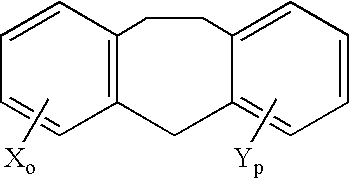Treatment of hormone-refractory prostate cancer
- Summary
- Abstract
- Description
- Claims
- Application Information
AI Technical Summary
Benefits of technology
Problems solved by technology
Method used
Image
Examples
example i
[0032] This Example describes a Phase II clinical trial of patients with hormone-refractory prostate cancer.
[0033] A Phase II trial was conducted as a non-randomized, single-arm clinical trial, according to a protocol that was approved by the Clinical Investigations Committees and the Institutional Ethical Review Boards of the University of Southern California and the University of Manitoba. Patients underwent history and physical examination, detailed assessment of hematological and biochemical parameters, bone scans, and CT scans of abdomen and pelvis. Based on prior preclinical and clinical modeling experience (Brandes et al, 1994, 1995, 1996), patients received a 3-weekly regimen (maximum number of cycles, 12) consisting of DPPE (5.3 mg / kg infused intravenously over 80 minutes) and mitoxantrone (12 mg / m.sup.2 i.v. during the last 20 minutes of DPPE infusion), as well as daily oral prednisone (5 mg bid). To prevent or ameliorate motion sickness associated with the DPPE infusion, ...
example ii
[0039] This Example describes the results of the Phase II clinical trial described in Example I.
[0040] The results of the Phase II clinical trial described in Example I are summarized in Tables 3 and 4 and FIG. 1. As can be seen, 79% of patients sustained a pain response, 66% of patients reduced analgesia, 56% bad a PSA reduction of .gtoreq.50% and 48% had a .gtoreq.75% PSA reduction The actuarial median survival was 12 months, although it was noted that 2-year survival was 24% and 3-year survival was 10%.
[0041] The pattern of pain relief was dramatic. Of the 15 patients with PPI of 2-5, ten reduced by more than 1.5; of the 13 patients with PPI of 1-1.9, five reduced by a PPI score of .gtoreq.1. One patient, while complaining of significant pain at baseline, scored himself with a PPI of 0, but was noted to have no pain after two cycles of treatment. In parallel to these results, 11 patients discontinued narcotic analgesics and 8 reduced their use (a total of 66% of cases reduced the...
PUM
| Property | Measurement | Unit |
|---|---|---|
| Dimensionless property | aaaaa | aaaaa |
| Dimensionless property | aaaaa | aaaaa |
| Dimensionless property | aaaaa | aaaaa |
Abstract
Description
Claims
Application Information
 Login to View More
Login to View More - R&D
- Intellectual Property
- Life Sciences
- Materials
- Tech Scout
- Unparalleled Data Quality
- Higher Quality Content
- 60% Fewer Hallucinations
Browse by: Latest US Patents, China's latest patents, Technical Efficacy Thesaurus, Application Domain, Technology Topic, Popular Technical Reports.
© 2025 PatSnap. All rights reserved.Legal|Privacy policy|Modern Slavery Act Transparency Statement|Sitemap|About US| Contact US: help@patsnap.com



